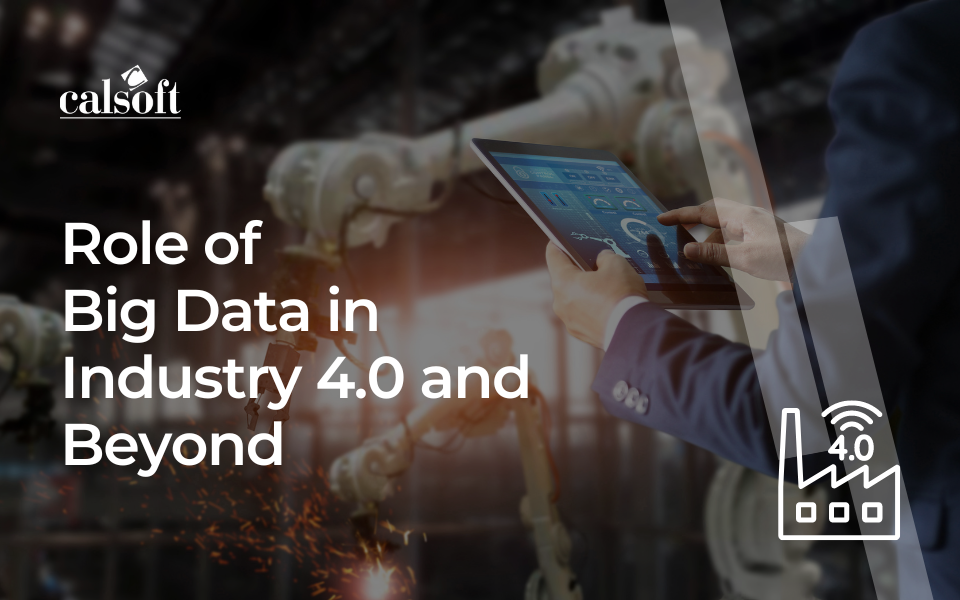The 4th industrial revolution has laid the foundation for massive improvements in how manufacturing and production are carried out practically. The first industrial revolution was when Steam Engines were introduced. Currently, in this era, computing technologies have produced massive amounts of data.
We have many sensors in the Industry 4.0 era such as vision sensors, and vibration sensors, and the data that these sensors generate can be analyzed to find patterns related to the health of the machine and other related tasks such as customer intent analysis (online shopping), and more.
As we can clearly see data is the new oil, it has a major part to play in transforming companies to meet industry 4.0 requirements. Big Data can be described using 4 Vs – Volume, Velocity, Veracity, and Variety.
Let’s understand these four pillars of Big Data in more detail:
- Volume: The amount of data generated. In the last ten years, the internet has generated more than half the data since its onset.
- Velocity: The rate at which data is Generated. The amount of Data that is generated per second (Throughput).
- Variety: The different types of data that are generated such as (videos, log files, etc.) and how accurate/interpretable they are.
- Veracity: The different types of data (quality of data) from different sources (structured/semi-structured).
Industry 4.0 can use Bigdata for Predictive maintenance, Production planning, and Material Requirements Planning.
Big Data to the Rescue
Organizations venturing into Industry 4.0 are using Big Data as it can be implemented using commodity hardware because of its cost-effectiveness. Hadoop was invented by Yahoo Inc, and it broke all benchmarks. Big Data has also made possible analytics, scalable, and accurate. Big Data runs on a distributed architecture that is both horizontally and vertically scalable.
The data that is generated can be mined to predict patterns that were previously impossible to detect. The availability of Big Data has also helped mitigate attacks on networks by hackers. There have been many instances where organizations efficiently mitigated enormous attacks by analyzing network log files.
Aggregating the information can result in developing expressive dashboards that can provide valuable insights. Big data can handle terabytes/petabytes of data. Organizations have used Big data to improve their supply chain management and secure large networks.
Big data aids in making important decisions as the insights that it generates can aid the entire organization in improving its processes. Computer hardware has evolved significantly over the past decade in design, and this has made big data analysis more insightful.
Big Data Architecture
Big data comprises data ingestion platforms that prepare data(structured/semi-structured) for analysis and Mapper/Reducer architecture. Big data analysis comprises mapper/reducer architecture. The data that has been extracted are split into a large number of smaller file (key/value) pairs which are later sorted and then merged in the reducer phase. This is done in a distributed mode/pseudo-distributed mode (single node).
For performing Bigdata analysis the data sources range from Websites log files, sensors, etc. Tō performs data ingestion in real-time big data Streaming is used (Apache Kafka). Big data streaming pipelines can prepare data for analysis in real time. Big data uses a special type of file system known as a Hadoop distributed File System (HDFS).
Use Cases of Industry 4.0
Industry 4.0 has resulted in coining the term Smart Factories. Equipment monitoring can be carried out using Big Data. Sensor data can be used to predict whether the equipment will fail soon. Vision sensors can also be analyzed to perform predictions using big data (Worker Fatigue analysis).
Production planning can be carried out by using Time series models on large datasets (last 10 years’ data), to predict future sales. Based on this data we can create production schedules that will help in speeding up production and reduce wastage of inventory. Patterns in data (Trend, Seasonality) can be identified which will help make necessary decisions.
Customer reviews on websites can be analyzed using Big Data Frameworks. Sentiment Analysis provides us with a very important tool to recommend products to customers. Efficient Recommendation Engines can also be designed using customer Feedback, Sales volume, and other features. This type of analysis uses Big Data streaming to perform analysis.
Pricing engines can also be developed to recommend the best prices for the products. Websites of competitors can be scrapped to provide the best possible price to the customer. Efficient pricing of airplane tickets is a very important use case as the price of airplane tickets is different for each vendor and the price also depends on the season. Profits can be optimized if pricing is done accurately and also customer satisfaction.
The telecom industry has used big data analytics to predict customer churn. The customer’s data such as survey data, customer site visit data, and payment methods can be used for predicting customer churn.
To know more about big data analytics and Industry 4.0, contact our data experts.







